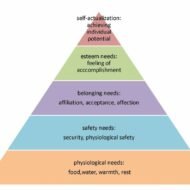Posted by Managementguru in Business Management, Entrepreneurship, Human Resource, Leadership, Principles of Management, Training & Development
on Mar 18th, 2014 | 0 comments

Executive Development – Options are Wide Open Who is an Executive: A person or group having administrative or managerial authority in an organization. While “executive” and “manager” and “leader” are often used interchangeably, “executive” is commonly used to signify the top 5% to 10% of the organization. Executive Development : aimed at developing the skills and competencies of those that (will) have executive positions in organisation. Capabilities of a Good Manager: A good manager can make an organization grow, survive and shine amidst tough competition, if he is bestowed with corporate competencies such as perseverance, capacity to put in hard work, sense of loyalty and responsibility, all of which may be inherited or acquired qualities. Loyalty stems from internalized morality that may be a result of his value system. Executive success is what the organizations should aim for, and firms should try to figure out the fundamental components that make up the success formula or equation. Road to Self-Development: In less developed countries, employees are more than satisfied if they are provided with a job that offers safety and security. Their thinking is restricted to mere physical and biological comforts and does not go beyond that point, where self development and self-actualization come into the picture. In developed countries, the situation is quite different, where the workers aim for empowerment and look for reasons that motivate them to do a job. Money also has its due role to play, and people whose wages are very meager cannot be expected to aim for empowerment, where their single motive is mere survival. Abraham Maslow’s Point of View: Abraham Maslow puts forward the hierarchical needs theory, arguing that, there are five levels of needs for people in general, right from physiological needs at the bottom of the pyramid and need for self actualization at the top, and safety, security and esteem needs coming in between. He points out that, once a need is satisfied, it ceases to be a motivator. This is so evident in our day to day lives, where wants and needs never cease to exist and once a want is satisfied, human mind wanders to catch hold of another. So, organizations should understand and analyze, what factors best motivate their employees, particularly their managers (who might serve as a source of inspiration to their subordinates).It should be remembered that non-availability of jobs leads to dissatisfaction whereas availability of jobs need not motivate employees. Some factors which have been proven to be real motivators are as following: Recognition Opportunities for self development Additional responsibilities(lateral expansion) Timely rewards(in terms of money and appreciation) Security Inculcating a sense of belongingness Conducive corporate atmosphere Corporate culture Good human relations Economic burden makes people less enthusiastic and anxious in developing countries and this hinders them from delivering to their fullest potential. Also the bureaucratic approach followed by conservative firms, autocratic leadership style and lack of supportive atmosphere make people work like automatons devoid of creativity. Such firms may show good results in terms of productivity initially, but in due course has to pay the price, in terms of absenteeism, high attrition rates and less efficiency. It has been proven that job satisfaction is directly proportional to efficiency. When people find a job tedious and monotonous, they tend to lose interest, which will be evident from their lack lustrous performance. Performance management has its bearing on executive success and by providing with ample scope for career advancement and autonomy; managers prove their mettle even within limited scope of resources. Acceleration of executive change implies the development of the executive mind for performing managerial activities in a better way. Note : A survey of CEOs in Fortune 500 enterprises indicated that executives spend little time with their...

Posted by Managementguru in Business Management, Motivation, Organisational behaviour, Principles of Management
on Mar 10th, 2014 | 0 comments

Motivation is one area where periodical updates are necessary for an organisation to gauge the morale and mood of their employees. Companies sometimes act very smart in that they break their hands by patting their own back. If you wish to propel your organisation forward, you need to satisfy your work force first. The million dollar question is a big “HOW?” Well, a problem properly diagnosed is half done. And this motivation thingy is not a problem at all. Keen observation and understanding is what is needed on a manager’s part to steer things in the right direction, that is good for the company. Man, even your kid will turn his back if you want to take control by unleashing your power. The right thing to do is to find out exactly how motivated they are. There are several things that come into the purview of motivation.Let us do this in a questionnaire format so that things might fall in place. Question No 1: What is that, that motivates an employee, to be more precise your employee? (This turns out to be the hot dissertation topic for many young MBA’s) Is it any one of the following? Financial rewards Clear Goals Connecting with others Rank Appreciation and Recognition Throat neck competition Job security Fear Results Excitement Variation or Diversity Principle of Motivation: Well, the principle of motivation is pretty much the same for all individuals. I 100 % go with Maslow’s hierarchial needs theory which travels right from physical needs at the base of the pyramid upto self realisation at the top. If this is the case,how come there is a disparity when everybody is subjected to the same kind of influence at the work place? For some it stops somewhere in the middle who are very much satisfied with the pay check figure and the perks that go with it. For some there is an inner drive that makes them unstoppable until they reach the pinnacle. This is the very thing that differentiates a manager from a subordinate. This is the very thing that distinguishes a CEO from a manager. This is the same thing that generates top business guns and management gurus who fall a genre apart form the rest of the crowd. Well, there are other factors such as the family background and the environmental influence that shaped up your personality all through. Motivation Surveys: Motivation surveys are not only important in getting to know your employees but also it showers a immaculate image on the company. It feels good for your workforce when they are involved and consulted with, on issues related to themselves. A recent Harvard review has stated that most of the managers feel that they really get motivated when there is : “Recognition for Good Work.” But folks, you will be surprised to know that the same review reveals another side of the coin, the top motivation for workers is when they make “Progress.” Again, call it the inner drive, impulse, motive, ambition, fire in belly, vigor, vitality…Getting to know your work force makes you “BOND WITH THEM” and it aids you in plugging the holes at the right place and at the right time. See, there is no bench mark for motivation, you respect your work force, treat them with dignity, communicate well and give them what they want and that’s it, you are defintely a winner. If you are a person capable of motivating your work force, you automatically become a source of inspiration. My humble suggestions to managers goes thus: 1. Make your employees understand what motivates them.( Kindly find what flares your temper before venturing into this exercise.!) 2....

Posted by Managementguru in Motivation, Principles of Management
on Feb 25th, 2014 | 0 comments

Motivation- Process and Theories “We can take a horse to water but cannot make it to drink”, so goes a saying. A motive is the inner drive or desire that causes a person to act. What is the importance of motivation in management? Well, I will say motivation is “the thing” and understanding human motivation is crucial in managing people. Abraham Maslow’s Hierarchy of Needs Theory with 10 Free Motivational Quotes Some definitions on motivation: 1. This is a total system of study which analyses human needs, motives, drives which cause a person to act or behave in a particular manner he/she does. 2. It is the stimulation of any emotion or desire operating upon one’s will and prompting or driving it to action-Guillerman 3.”Motivation represents a satisfied need which creates a state of tension or dis-equilibrium causing the individual to move in a goal directed pattern towards restoring a state of equilibrium by satisfying the needs.”-Herzberg It has been accepted by psychologists world over that all behavior is motivated and revolves around a desire for satisfying certain needs. Motivation process: NEEDS->DRIVES->GOALS THEORIES OF MOTIVATION: Theories of Motivation are classified into · Content theories and · Process Theories CONTENT THEORIES: A. Maslow’s hierarchy of needs B. Herzberg two factor theory C. Theory ‘X’ and Theory ‘Y’ D. McClelland’s achievement motivation theory E. Clayton Alderfer’s ERG theory PROCESS THEORIES: A. Vroom’s expectancy model B. Porter-Lawler’s model C. Adam’s equity theory Content theories seek to determine what motivates people at work. Priorities are taken into consideration backed up by incentives or goals. Maslow Need Hierarchy Theory (1943) Abraham Maslow postulates that human needs can be organized into a hierarchy of prepotency with the physiological needs at the bottom and self-actualization at the top. He states that as each need gets satisfied the person gets motivated to reach the next higher level. As the person moves up the hierarchy, one finds that esteem needs and self-actualization are more of internal in nature and it solely depends on the individual’s drive. Basic needs -85 % Security or safety needs-70% Social needs- 50% Esteem needs-40% Self-actualization-mere 10% This is the statistics that represents the percentage ratio of satisfaction and once a need is satisfied it “CEASES TO BE A MOTIVATOR.” · PHYSIOLOGICAL NEEDS-Basic needs for the maintenance of body processes such as hunger, thirst, sex and sleep. When these are satisfied, the higher order needs emerge, which dominate a person’s behavior. · SAFETY NEEDS– Needs like freedom from physical harm, need for orderly life and economic security · SOCIAL NEEDS– These emerge when the basic needs are satisfied and denote love, affection and belongingness. · ESTEEM NEEDS– Needs referring to strength, achievement, adequacy and also needs which pertain to recognition, appreciation and achievement. Man values self esteem based on one’s own abilities on one hand, and recognition and reputation on the other. · NEED FOR SELF–ACTUALISTION– When all the above mentioned needs are satisfied the need for self actualization arises. This need is described as the need to become everything that one is capable of becoming. CRITICISM: · There is little empirical evidence to support this theory though it is very popular. · This theory talks only about the needs from an individual’s perspective and does not link it with organizational...

Posted by Managementguru in Business Management, Human Resource, Principles of Management
on Feb 15th, 2014 | 0 comments

It all began with ADAM SMITH (1776), the Scottish economist when he lashed out against the abuses of monopoly and mercantilism. He highlighted that productivity was a result of specialization, division of work and exchange. We witness the evidence of managerial practices right from the Sumerian age as early as 5000 B.C., from their written records to administer the governmental and commercial activities. Koutilys’a ARTHASASTHRA and Thiruvalluvar’s THIRUKKURAL have spelt out management principles in a coherent way that suits any time period. MILESTONES IN THE DEVELOPMENT OF MANAGEMENT THOUGHT: 5000 B.C SUMERIANS RECORD KEEPING 4000 B.C EGYPTIANS PLANNING,ORGANISING AND CONTROLLING 500 B.C GREEKS SPECIALISATION 1800 ELI WHITNEY MASS PRODUCTION MADE POSSIBLE 1822 CHARLES BABBAGE PRODUCED DIFFERENCE MACHINE,A FORERUNNER OF TODAY’S COMPUTER 1911 F.W.TAYLOR SCIENTIFIC MANAGEMENT 1916 HENRI FAYOL MANAGEMENT FUNCTIONS 1943 ABRAHAM MASLOW MOTIVATION MODEL 1954 PETER DRUCKER POPULARISED MBO-MANAGEMENT BY OBJECTIVES 1961 RENSIS LIKERT CONTINGENCY LEADERSHIP PRE-SCIENTIFIC MANAGEMENT SCHOOL Management is as old as civilization and it is a separate entity by itself. The full boom of management was witnessed with the advent of INDUSTRIAL REVOLUTION in Europe in the late 18th century. There was mass exodus of people to urban cities in search of jobs due to mechanisation and there arose a necessity to manage people. Initially they were treated as slaves by the owners but later the link factor called “Managers” came into the picture to negotiate and solve issues between the union and management. Important contributors to the management theories Robert Owen: He introduced a system of open rating for workers’ work on a daily basis. He insisted that improving the lives of the working individuals through labor welfare measures was the only way to increase productivity. Charles Babbage: He was a visionary who could foresee scientific management. His difference engine or the modern day computer has made people’s lives easy and has replaced manual operations with machines. Captain Henry Metcalfe: He formed the Bureau of Personal Administration in New York Introduced time cards and material cards Fredrick Winslow Taylor: Founder of scientific management and is called the “Father of scientific management.” He emphasized on the need for management planning and standardization of tools and materials, the former to gauge the capability of men and machine and the latter to save time and increase productivity. He was one of the founders of “Time and Motion study.” His theory was based on the following assumptions: · Production planning and control is the main function of an organization · Insisted on functional foremanship · Time study as the basis for arriving standard time · Standardisation of all tools and parts · The use of ‘slide-rules’ and similar time saving implements · Inroduced ‘time-cards’ for workmen · The ‘differential rate system of wages Henry Gantt: He proposed the Gantt Chart, a visual method to compare production output with time it took to complete a task. This is considered to be a forerunner of today’s PERT-PROGRAMME EVALUATION and REVIEW TECHNIQUE). He also developed · Work quota systems · Bonus systems for workers or managers Objectives of Scientific Management · To ensure continuous employment opportunities for the work force · To gauge market tendencies · To render workers a high standard of living; this motivates them to contribute more · To increase the income of the workers · To assure a socially agreeable condition of working environment · Proper selection, training, assignment, transfer and promotion of workers · To develop self-confidence and self-respect among workers through opportunity and participation · To promote justice through elimination of discrimination in wage-rates · To eliminate causes of friction and to promote understanding, tolerance and the spirit of team-work-Espirit de...








